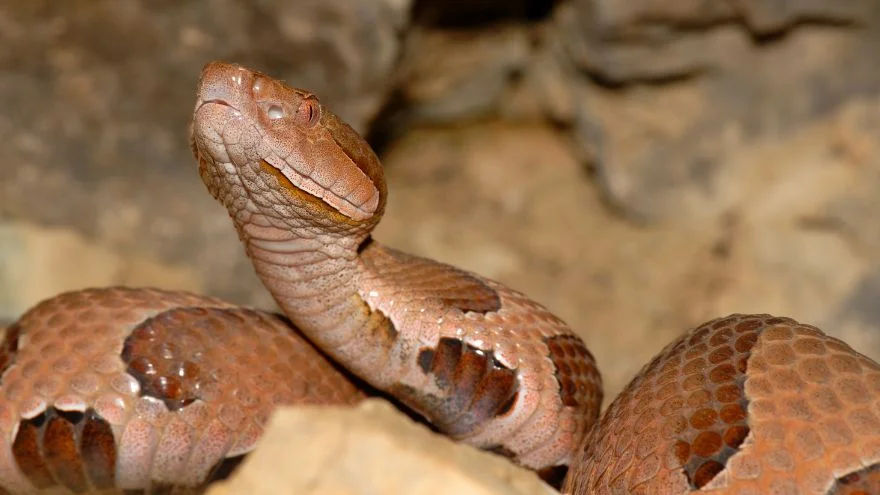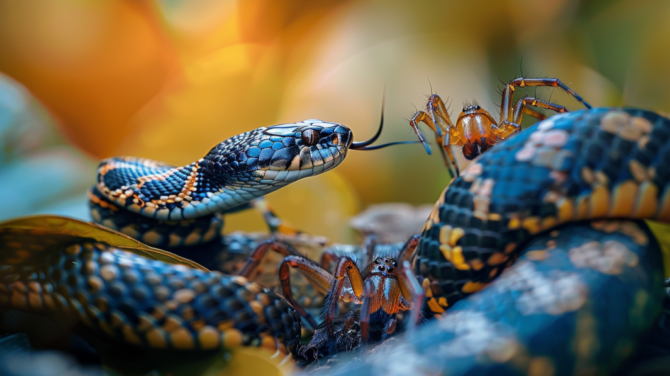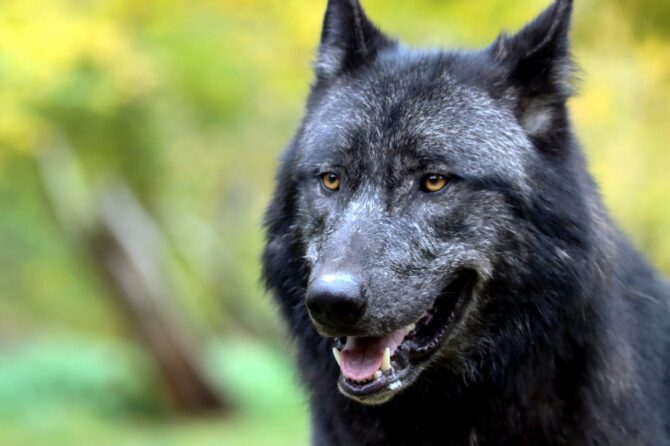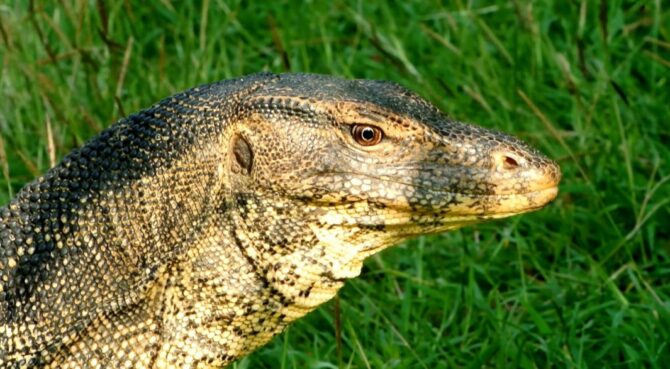Missouri is a state in the Midwestern region of the United States that is rich with natural habitats, from Mississippi lowlands to the Glaciated plains down to crystal-clear lakes.
These habitats give a home to different animals and allow them to thrive comfortably.
Some of the amazing wildlife in Missouri can be effortlessly deadly to humans and you should take extra precautions. Missouri’s most dangerous animals include deers, poisonous spiders, venomous snakes, alligator snapping turtle, e.t.c.
This article will discuss 10 of the most dangerous animals in Missouri that can inflict great harm if approached and important wildlife safety tips you should know.
What are the Most Dangerous Animals in Missouri?
1. Black Widow Spider
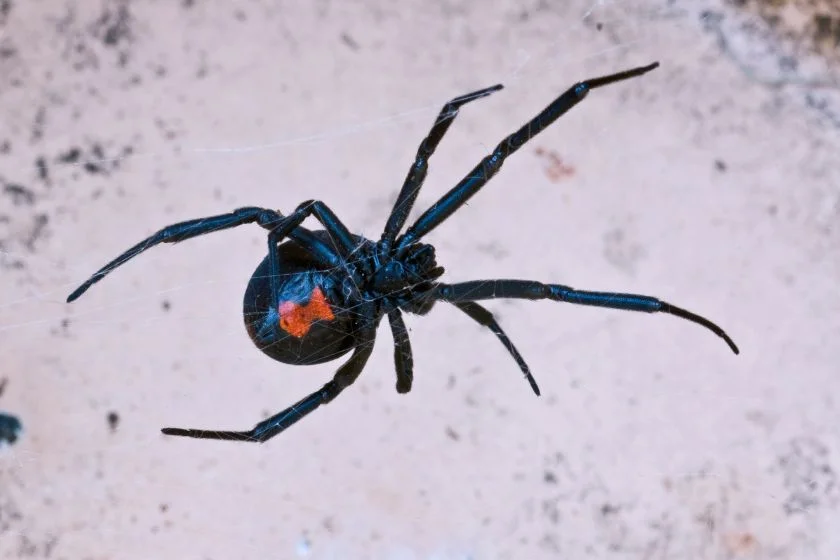
- Scientific name: Latrodectus mactans
- Classification: Arachnid
- Habitat: Basements, crevices, and woodpiles
- Diet: Carnivorous
- Conservation status: Least concern
The black widow usually thrives in the temperate region. They can be found in North and South America, Africa, Europe, and Asia but not in Antarctica.
It is the first on the list because, in addition to being dangerous, it could easily cohabit with humans without being noticed, given its relatively small size.
Female black widows are bigger than the males.
They also look slightly different from the males with the red coloration in their round abdomen and are notorious for killing and eating the males after mating, hence the name black widow.
They can live for up to three to four years.
A black widow’s bite is harmful to humans. Its venom contains a neurotoxin that causes hypertension, muscular pain, and difficulty breathing.
It is also possible to notice painful swellings on the bite area, achiness and sickness in the stomach after being bitten.
2. Osage Copperheads

- Scientific name: Agkistrodon contortrix phaeogaster
- Classification: Reptile
- Habitat: Forests, swamps, mountains
- Diet: Carnivorous
- Conservation status: Least concern
Osage Copperheads are easily distinguished by the light borderline around their dark markings.
They are venomous and are the most encountered copperheads in Missouri, especially in woodlands.
Young copperheads use their yellow tails to attract prey.
They are masters of camouflage and easily blend with their environment, especially with dead leaves.
When they are encountered, it is advised not to handle them but to walk away.
These snakes are plentiful in Missouri, and most snake-related bites are from these snake specie.
3. White-Tailed Deer
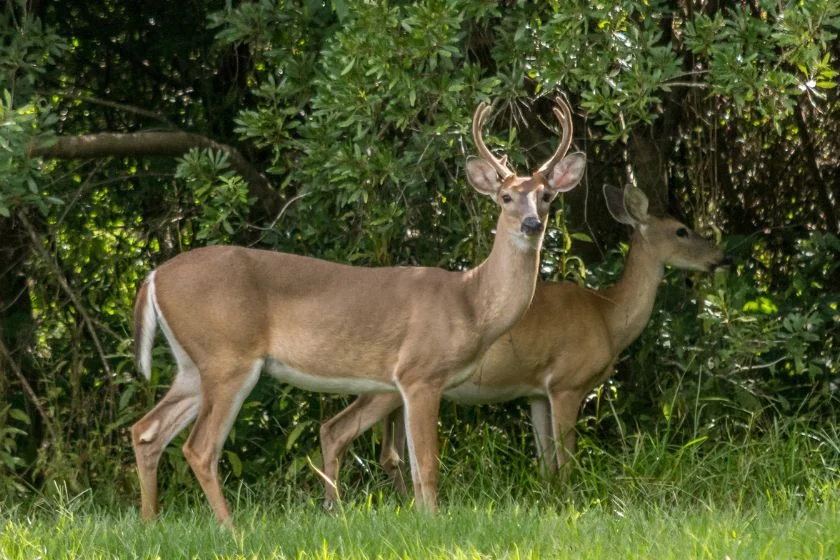
- Scientific name: Odocoileus virginianus
- Classification: Mammal
- Habitat: Woodlands, rocky mountains, urban area
- Diet: Herbivorous
- Conservation status: Least concern
In the deer family, the white-tailed deer is the smallest. As one of Missouri’s wildlife, they are found in all of Missouri’s counties.
They have great adaptability to various habitats ranging from woodlands to urban and suburban environments.
As much as they are cute, they are one of the main causes of car wrecks in Missouri, especially when they try to run across highways or roads.
Also, they normally cause economic damage to farmers by feeding on cash crops making it nearly impossible to grow certain kinds of crops.
4. Alligator Snapping Turtle

- Scientific name: Macrochelys temminckii
- Classification: Reptile
- Habitat: Rivers, lakes, dead-submerged trees, shrubs
- Diet: Carnivorous
- Conservation status: Vulnerable
This specie of turtle is often depicted as dinosaur-like because it possesses a primitive-looking face. Their shells are also spiky.
Among all the freshwater turtles, they are the biggest and the heaviest. They are thought to be closely related to the common snapping turtle.
They have a powerful bite force capable of amputating fingers if provoked.
They use their tongue, which can imitate the movement of a worm, to lure prey to their mouth.
Once a lured prey is within their grasp, they close their mouth with tremendous speed and force.
5. Missouri Tarantula

- Scientific name: Aphonopelma hentzi
- Classification: Arachnid
- Habitat: Burrowed underground, grasslands, abandoned dens
- Diet: Carnivorous
- Conservation status: Least concern
Missouri Tarantula, also known as Texas brown tarantula, is the only tarantula found in Missouri.
Their coloration is variants of dark brown. They are commonly found in dry meadows south of the Missouri River.
This species of spider possesses a venom that can constitute serious harm to humans with allergic reactions.
The pain from their bite can be likened to that of a bee sting. Their fangs are large.
Wounds caused by this animal’s fang could be quite painful. It can also cause secondary infection if left untreated.
6. Timber Rattlesnake
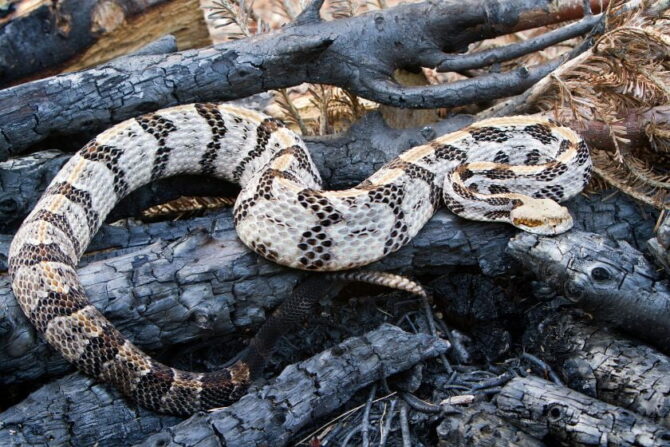
- Scientific name: Crotalus horridus
- Classification: Reptile
- Habitat: Swamps, pine forests, hilly forests
- Diet: Carnivorous
- Conservation status: Least concern
Timber rattlesnakes, also known as the American viper or the cane-brake, occupy the upland oak-hickory forests, the bottom and hardwood forests, and the eastern red cedar glades.
These pit vipers are Missouri’s largest venomous snakes with varying coloration.
They are one of the most dangerous snakes in North America due to their huge size and highly potent venom capable of causing death to a human.
When a timber rattlesnake perceives a threat, it rattles its tail as a warning before striking.
A bite from this snake requires a medical emergency.
7. Western Pygmy Rattlesnake

- Scientific name: Sistrurus miliarius streckeri
- Classification: Reptile
- Habitat: Forests, burrows, logs
- Diet: Carnivorous
- Conservation status: Least concern
These snakes, with adults measuring from 38–51cm, are found in the south-central United States.
They are part of the pit viper family and one of the smallest rattlesnakes in the United States, Canada, and Mexico.
Like all rattlesnakes, a western pygmy is potentially dangerous when handled or approached.
Urgent medical attention is typically required for a bitten victim.
A western pygmy rattlesnake is naturally shy and would rather seek to escape than bite in an encounter with a human.
8. Northern Redbelly Snake

- Scientific name: Storieria occipitomaculata
- Classification: Reptile
- Habitat: Woodland, wet meadows, swamp forests
- Diet: Carnivorous
- Conservation status: Least concern
The northern redbelly snake is a small, secretive snake measuring 8–11 inches.
Most times, the northern redbelly snake is mistaken for the northern brown snake, eastern worm snake, and northern ring-necked snake.
Although they hardly bite, they are still fairly dangerous. When a northern redbelly snake is disturbed, it releases musk from special glands.
This snake is not aggressive and, when given a chance, would escape rather than attack. Going too close to it or handling it is not advised.
9. Raccoons

- Scientific name: Procyon lotor
- Classification: Mammal
- Habitat: Woods, wetlands, suburbs
- Diet: Omnivorous
- Conservation: Least concern
Raccoons are famous for their black mask of fur, which covers their eye area.
They are solitary creatures that live around where there is food and water.
They are mostly active at night and are notorious for stealing food in garbage cans in parks.
Although they look endearing and appealing, it is not advised to go close to them.
Raccoons can be quite vicious when approached and very aggressive when provoked.
Raccoons are also known to be common carriers of rabies and leptospirosis. Caution should be taken when approaching them.
10. Black Bear

- Scientific name: Ursus americanus
- Classification: Mammal
- Habitat: Woodlands, forests
- Diet: Omnivorous
- Conservation status: Least concern
The black bear is a large mammal commonly found in the forests of North America.
They are sometimes called the cinnamon bear, the blue-black glacier bear, or the brown bear and vary in color even within the same litter.
Bears though docile and timid, are considered dangerous. If provoked or invaded, they could become hostile, which could sometimes be fatal.
Attacks by bears on humans occur, although it is rare.
Residing in an area where bears roam increases the risk of an attack as bears could sometimes be territorial.
Preventing encounters is one of the best ways of avoiding a bear attack.
Missouri Wildlife Safety Tips
There are rules to everything, and relating to wildlife in Missouri also comes with boundaries, both for your safety and theirs.
Ensure you strictly adhere to the guidelines below;
- Always watch where you step when you are in the forest. Snakes and many other reptiles will never strike a human unprovoked. Ensure you don’t provoke them by stepping on them.
- Whenever you sight a wounded animal, do not try to treat it. Instead, report it to the authorities as they are better equipped to handle such a scenario compared to you.
- If you encounter a snake, do not try to prevent it from escaping. They could bite you as a defensive mechanism.
- Let the animals be; trying to touch or pick them is normally seen as a threat from their point of view. In defense, they might bite or claw at you to get away.
- Be conscious of your surrounding. Examine any rock or log you plan to sit on.
- Do not attempt to feed any animal. They might not understand your kind gesture. Let them be.
Frequently Asked Questions
Are there wolves in Missouri?
There used to be wolves in Missouri, but they got exterminated in the early 1900s. However, a few wander by from time to time from neighboring states.
Which animal is the apex predator in Missouri?
The American black bear would have held this title, but they are herbivores, making the Bobcat the next in line as the apex predator.
The Bobcat is a Carnivore and has been known to take on large prey as big as a deer.
Which dangerous animal is more likely to kill you in Missouri?
Although there are several dangerous wildlife in Missouri, you’re more likely to die from venomous snakes than the others.
Venomous snakes such as the Copperheads, Cottonmouth, Timber rattlesnake, etc., are what you should look out for the most because not only do they have lethal venom, but these dangerous reptiles are common in Missouri.
Conclusion
These most dangerous animals in Missouri are not evil in and of themselves. They all have their lovely nature and tend to stay out of humans’ way.
Most importantly, they are a very important part of the ecosystem.
However, their aggressive nature makes them dangerous for humans, so you should keep your distance and follow any guidelines you’re given, and you will be safe.
